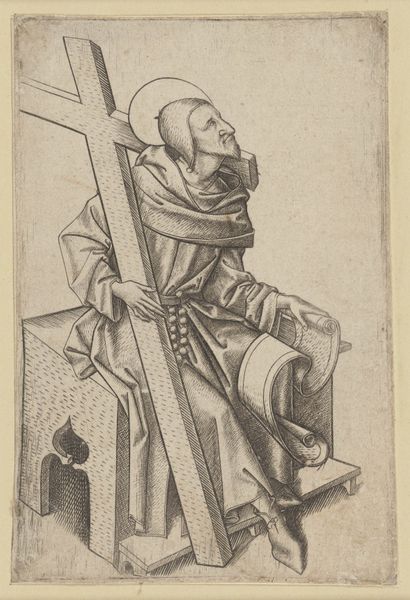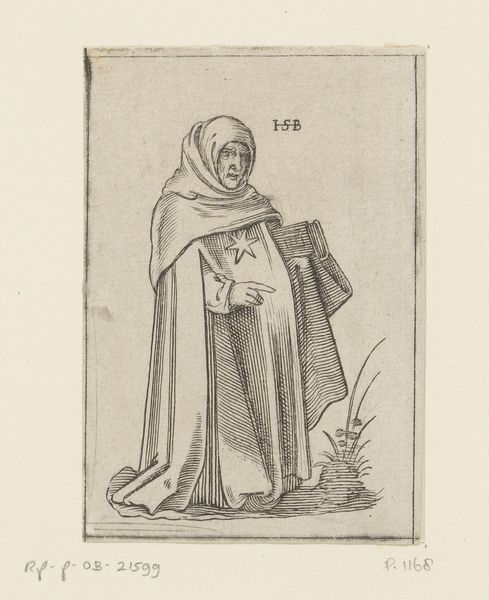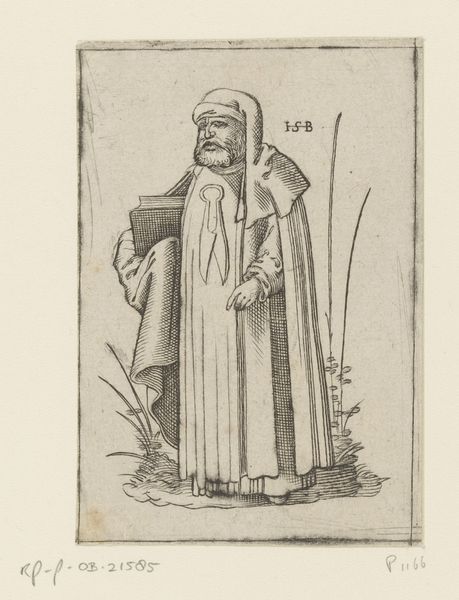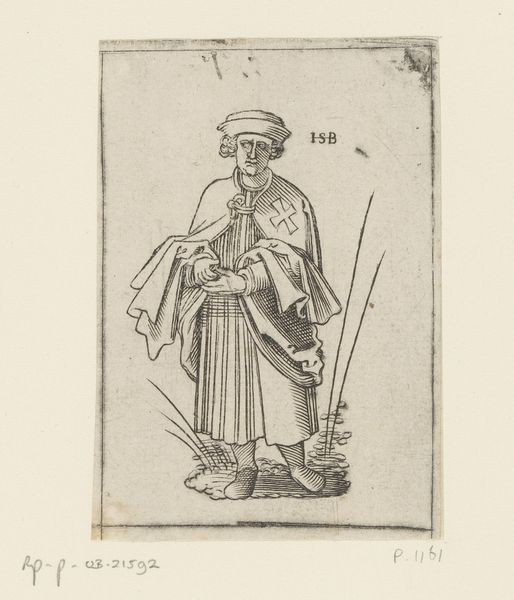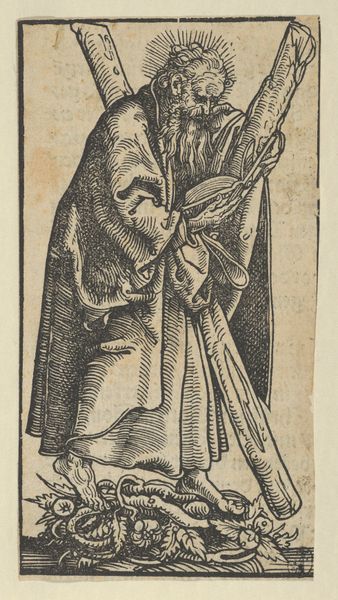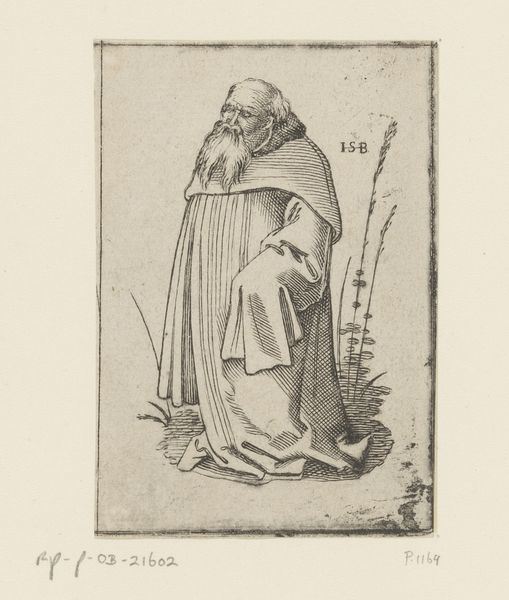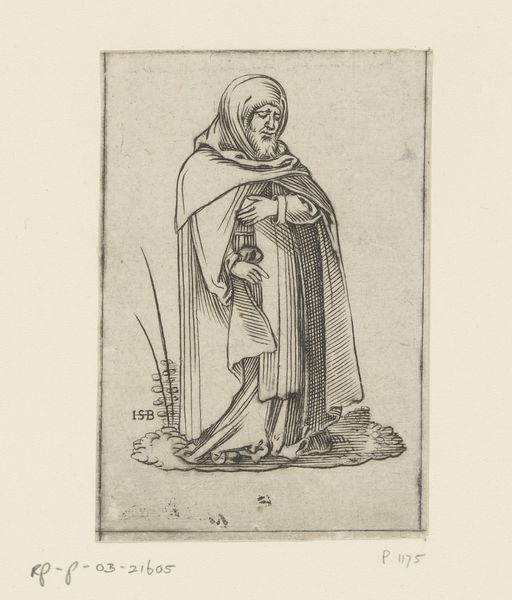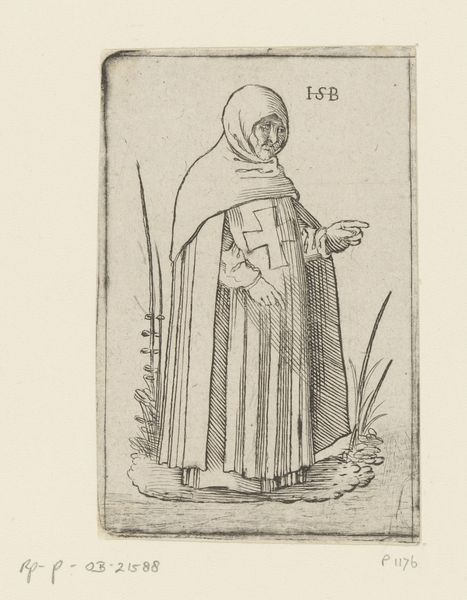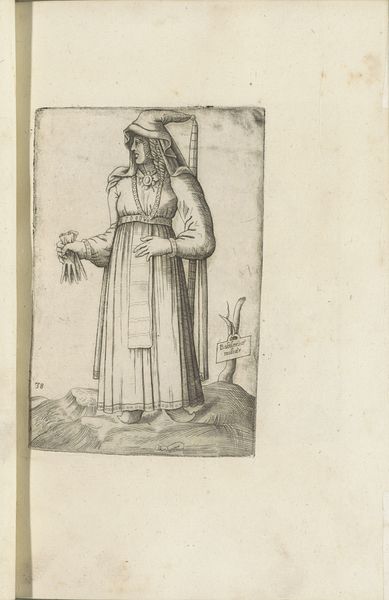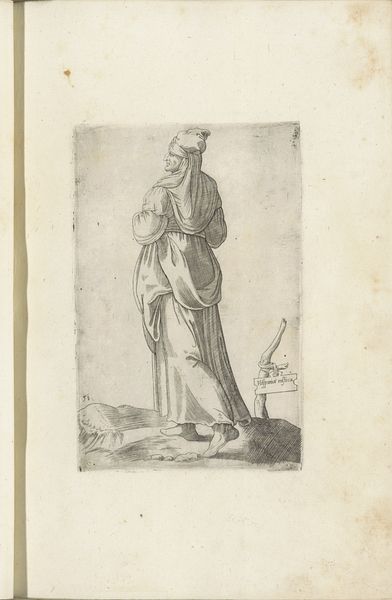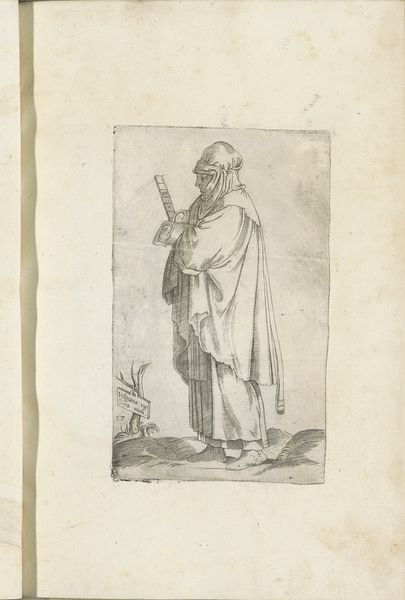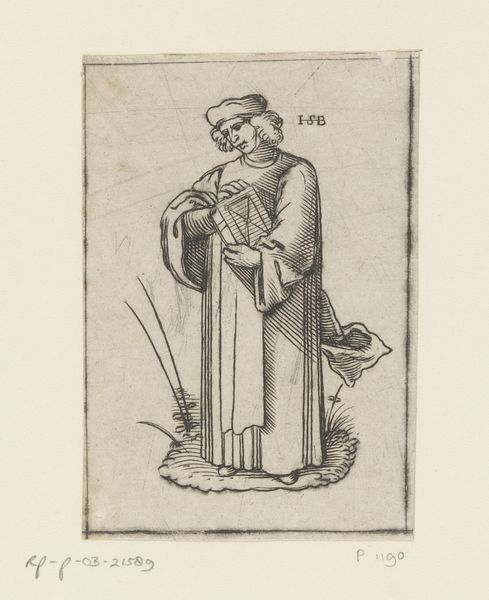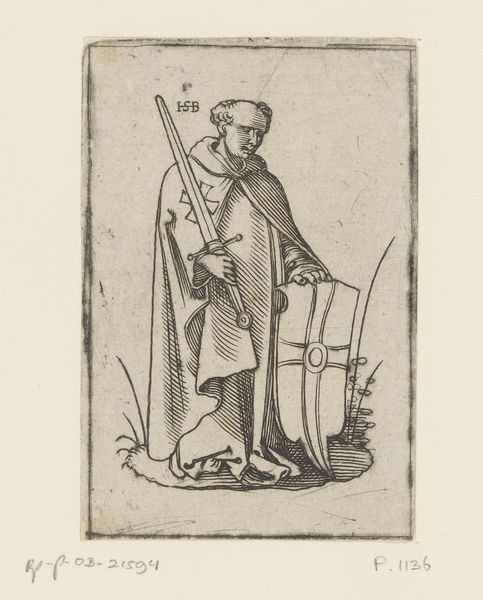
print, engraving
#
medieval
# print
#
old engraving style
#
figuration
#
line
#
history-painting
#
engraving
Dimensions: height 95 mm, width 58 mm
Copyright: Rijks Museum: Open Domain
Curator: This is "A Mendicant Friar," an engraving made sometime after 1526. The artist is currently unknown. Editor: It has a kind of weary solemnity about it, wouldn't you say? A feeling of…acceptance. Curator: Absolutely. Looking at the printmaking itself, the lines are clean, precise, allowing for a surprising amount of detail. Consider the textures—the roughspun cloak, the delicate rosary beads—all achieved through skillful manipulation of the burin. What can this reveal to us about production? The use of engraving during the Reformation wasn't merely for aesthetics, was it? Prints like these were commodities; it provided accessible religious imagery, tools of reform during periods of widespread social and religious transformation. Editor: Precisely! That crucifix he carries becomes a loaded symbol. This is post-Reformation imagery that demands context: The image resonates with the sociopolitical turmoil. He's an ambiguous figure. The monastic orders had become the focus of populist resentment for their perceived wealth. Is this intended to be sympathetic, to evoke charity? The choice to depict bare feet speaks volumes, intentionally evokes humility and his material circumstances, positioning this friar at the bottom of society's hierarchy. Curator: He’s certainly meant to embody a kind of...material renunciation. Every element here—from the begging bowl to the simple garments, is purposefully rendered to express a commitment to poverty. I do wonder, though, who this work might have been made for, how many of these were commissioned? Where were they displayed or sold, how did this fit into an industry? Editor: Yes, we need to remember that artistic depictions, especially of marginalized groups, have historically contributed to narratives about piety. Consider the gaze and the downward posture: it has less to do with spiritual serenity than social pressures. Does this friar really hold spiritual authority, or is his social identity precarious, sustained through limited materials? Curator: An enduring, and still resonant, depiction, wouldn't you agree? Editor: I think so. It is evocative even across the centuries. And serves as a good lesson on not always accepting images on face value.
Comments
No comments
Be the first to comment and join the conversation on the ultimate creative platform.
